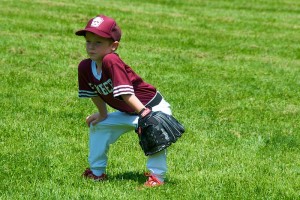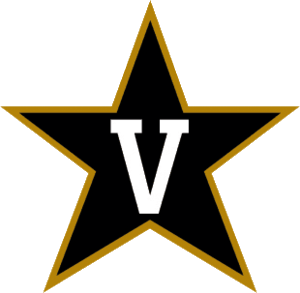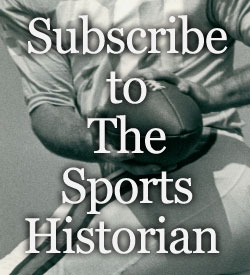For Bobby Jones, the time had come to retire from competitive golf in late 1930. He had just completed the Grand Slam—United States Open, United States Amateur, British Open, British Amateur—and the strain of competing in major championships had taken a physical and mental toll on him. Playing as an amateur, Jones won 13 major championships between 1923 and 1930 . He was the overwhelming favorite in any tournament he entered. Thousands of fans followed him from one hole to the next, and he wished he could just play golf somewhere with his friends, out of the spotlight. So Jones announced his retirement at the age of 28 to shocked fans across the globe. However, golf was still in his blood. A conversation over a drink with friend Clifford Roberts set in motion the wheels of destiny that would eventually lead to Augusta National Golf Club and the Masters Tournament.
Roberts had moved around the country while growing up and eventually became a Wall Street stockbroker. The market crash of 1929 hit Roberts very hard, but his financial abilities would prove invaluable as Augusta National tried to become a viable and sustainable operation. He and Jones had met in the 1920s through mutual friends. While sharing a drink one day, Jones informed Roberts of his wish to build a golf course in the South that would reflect Jones’ golf values—the course must be strategic and full of options for players of all skill levels. Roberts suggested that Jones look in Augusta, Georgia for land. For several decades, Augusta had served as a winter destination for wealthy northeasterners. Roberts had been a part of some of these groups and believed these people could form the core of a national membership for the new club. Jones had visited Augusta on numerous occasions and liked the thought of a private club in that city in part because the climate was warmer in Augusta during the winter months than Atlanta, which would allow more playing opportunities and better course conditions. Roberts told Jones he would work with Jones on making his dream a reality, but only if Jones agreed to allow Roberts to handle all of the financing for the project. Jones wholeheartedly agreed.
In the spring of 1931, Thomas Barrett, the vice president of the Bon-Air-Vanderbilt Hotel in Augusta, suggested a piece of property to Roberts that could be converted into Jones’ course. The 365-acre property turned out to be the old Fruitland Nurseries, which had ceased operations in 1910. The Berckmans family bought an old indigo plantation and turned it into a nursery in the 1850s. The family imported trees and plants from all over the world, including the azalea plant. The property, mainly because of the Depression, could be bought very cheaply. Jones stated in Golf Is My Game (Doubleday & Co.: New York, 1960), that when he first saw the property it was an “unforgettable” experience and further declared, “It seemed that this land had been lying here for years just waiting for someone to lay a golf course upon it. Indeed, it even looked as though it were already a golf course.” With Jones’ blessing, Barrett and Roberts handled the financing for the purchase of the property.
With the property secured, Jones needed to decide on a designer for the course. Jones wanted someone who shared his values on the game of golf. Alister MacKenzie sent a book he wrote to Jones in 1927 entitled Golf Architecture Economy in Course Construction and Green-Keeping (Originally published in 1920. Republished by Coventry House Publishing: Dublin, OH, 2017). Jones remembered that the book detailed similar views to his on how a golf course should be designed (the book is on display today at East Lake Golf Club in Atlanta). MacKenzie believed that a course should preserve all natural beauty and emphasize strategy as well as skill. He also thought that a course should be challenging and interesting for golfers of all skill levels. Clearly, Jones and MacKenzie shared a common vision.
MacKenzie, a Scotsman, became a golf course designer after practicing medicine and serving as a civil surgeon for the British Army in two wars. The Royal and Ancient Golf Club in St. Andrews hired MacKenzie as a consultant for the Old Course in the 1920s. He came to California in the mid-1920s where he was commissioned to design Cypress Point Golf Course near Pebble Beach Golf Links. Not long after, Pebble Beach management hired MacKenzie to re-design the eighth and 13th greens. He was next commissioned to design Pasatiempo Golf Club in Santa Cruz.
In 1929, Jones headed to California to play in the United States Amateur held at Pebble Beach. He went out early to play several of the courses in the state, and one of those was MacKenzie’s Cypress Point. After Jones was upset in the first round of the U.S. Amateur, he decided to play Cypress Point one more time. On this occasion Jones spoke with MacKenzie about course design. Jones then played Pasatiempo, where Jones gained further appreciation for MacKenzie’s talent.
With these memories etched into his head, Jones knew that MacKenzie was the man to design Augusta National. After a meeting at the Vanderbilt Hotel in New York, MacKenzie agreed to a formal offer of $10,000 to design Augusta National. Roberts helped secure some funding for the course construction. With Jones’ input, MacKenzie began the design of Augusta National in 1931. The course was completed in less than two years with the formal opening in January 1933. With the suggestion from one of the Berckmans, distinctive trees and flowers were planted on each hole of the new course.
After MacKenzie made several requests for payment after the completion of the project, Roberts finally gave him $2,000.00 to appease him, but MacKenzie never received the money originally agreed to in New York. He died at his home on Pasatiempo in 1934.
Augusta National struggled financially after the course opened. Getting members to join became a problem. Grantland Rice, the famous sportswriter, agreed to become a member and recruit others. Finally, Roberts and Jones came up with the idea to host a golf tournament in order to raise much needed capital. Originally, they thought of bringing the United States Open to Augusta National but that idea dissipated because of scheduling conflicts and Augusta’s summer heat. So Roberts and Jones decided to host their own tournament. As a means to attract participants and to lend credibility to the event, Jones agreed to participate. The city of Augusta gave $10,000 to support it.
The first Augusta National Invitation Tournament took place in the spring of 1934. Horton Smith won the inaugural event while Jones finished 13th. Jones, Roberts and all involved deemed the tournament a success. The next year, the tournament gained more notoriety when Gene Sarazen scored a double eagle on the par five 15th hole in the final round to force a play-off with Craig Wood. Sarazen defeated Wood the next day for the victory.
Through the diligence of Roberts, increased membership and the income from the tournament, Augusta National’s finances stabilized in the coming years. The Club would become the viable and sustainable organization that it is known as today.
Roberts unofficially called the tournament the Masters in the early years but that moniker did not become official until 1939. The tournament became a success because of the work of Roberts and Jones. Early April became the ideal time of year for the event. The beauty of the trees and flowers that lent their names to the 18 holes was magnificent that time of year. Moreover, recognition from the national baseball writers could be garnered in early April as they made their way North after spring training in Florida. Many of them stopped in Augusta for a brief respite, the Masters tournament, and the hospitality of Roberts and Jones. Additionally, no other major golf event occupied the calendar during that time of year. All of these factors helped establish Augusta National Golf Club and the Masters as the golf venue and event known universally as golf’s finest!











